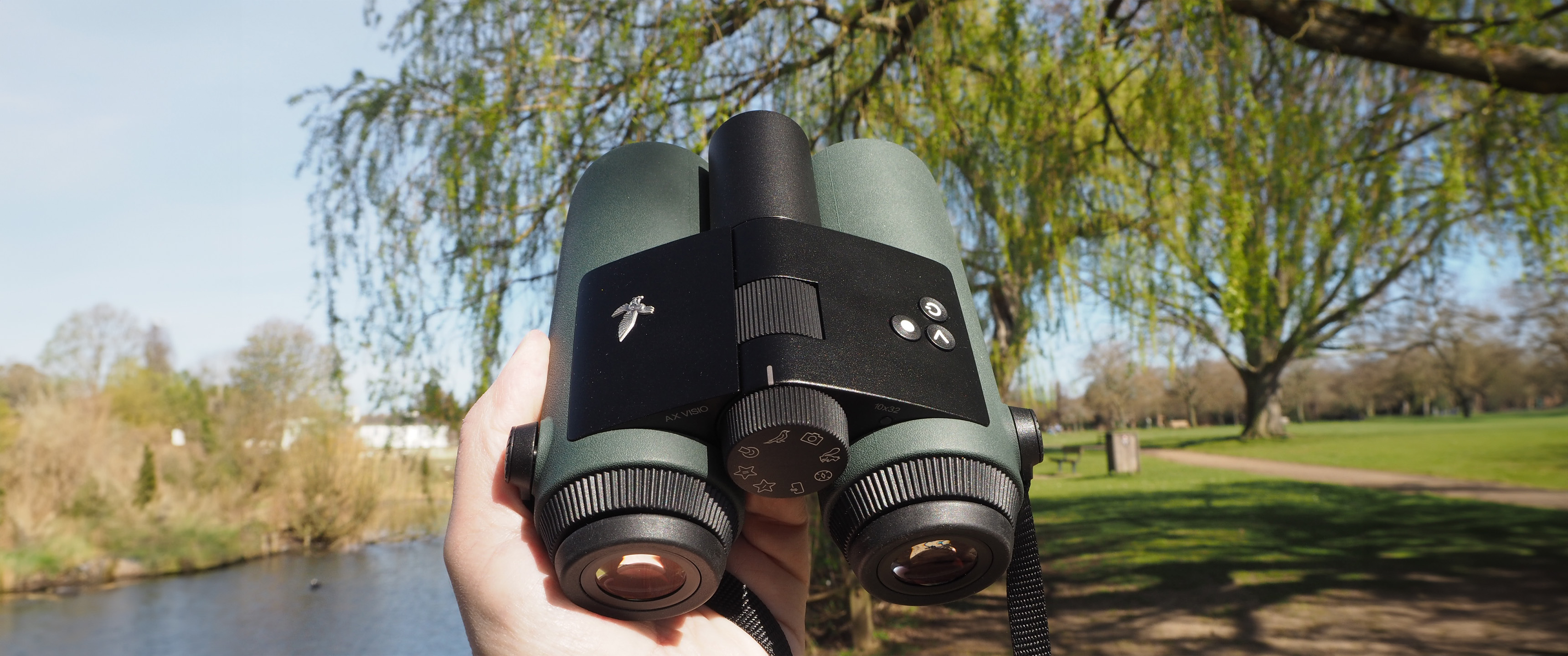Live Science Verdict
We love the class-leading, razor-sharp optics of the Swarovski Optik AX Visio 10x32. Its performance makes it a top contender for anyone on the lookout for a premium binocular of sufficiently high quality to allow for the identification of fine detail from afar. Perfect for wildlife watching as well as lunar observation, while its analog features are top-notch, it’s the digital extras that push up the price. Requiring a period of familiarization, these not only provide the ability to name unfamiliar birds and animals with a button press but also indicate the shape of things to come.
Pros
- +
Excellent visibility due to high-quality optical construction
- +
AI-enhanced in-eyepiece identification of animals and wildlife is a fun extra
- +
Rubberized surface makes for steady handheld observation
Cons
- -
Over 1 kg in weight before battery added
- -
AI features and smartphone pairing require patience
- -
Eye-wateringly expensive
Why you can trust Live Science
In return for an ultra-sharp, extra-clear binocular able to identify fine detail and subtle colour tones on wildlife when viewed from afar, delivering images with an almost three-dimensional intensity, we’d expect to pay top dollar. Add to this a bunch of artificial intelligence-enabled features that name the animal we’re observing, and it’s no surprise that the cost skyrockets.
Make no mistake, in claiming to be the world’s first AI-enhanced smart binocular, the Swarovski Optik AX Visio 10x32 is at the luxury end of what’s available. It suggests itself as not just an excellent viewing tool, but a potential educator as well. Fortunately for anyone tempted to invest, with regular software updates promised, it comes with a degree of futureproofing built in.
Magnification: 10x
Objective lens diameter: 32mm
Field of view at 1000m: 112m
Minimum focusing distance: 3m / 9.8 feet
Eye relief: 17.8mm
Weather sealing: Yes
Tripod adaptable: No
Dimensions: 5.7 x 5.4 x 3.8-inches / 145 x 137 x 96mm
Weight: 38.4 oz (1,090g) without rechargeable battery
Leaving aside the question of whether any enthusiast spending this much on a binocular for their hobby or pastime needs to be told what they’re looking at, this is a device that stands out from the crowd. And not just because of its egg-shaped, industrial-designed lens rims. So, let’s explore further whether it’s worth adding the cutting-edge Swarovski Optik AX Visio 10x32 to your setup, whether you enjoy using binoculars for bird-watching, stargazing or prefer a compact binocular for travel.
Swarovski Optik AX Visio 10x32 smart binocular review
Design & Comfort
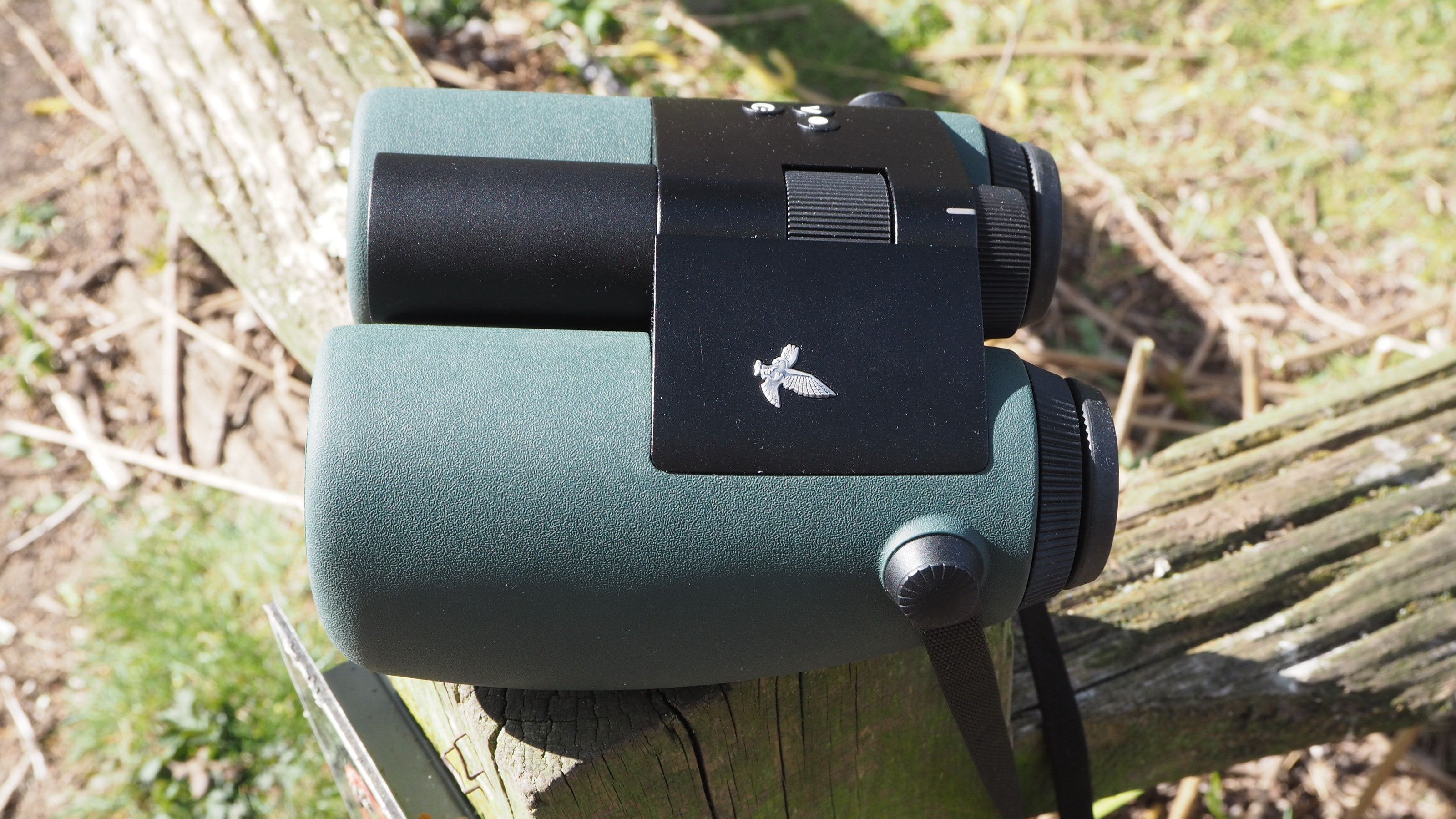
- Rubberized focus ring ergonomically positioned between lenses
- Inter-pupillary distance adjustable to line up with our own eyes
- Rubber caps are provided to protect optics from dust and grime
A luxury product doesn’t just need to look great, it needs to function exceptionally well with it. To achieve this, its Austrian manufacturer involved an industrial designer in the creation of the Swarovski Optik AX Visio 10x32, even going so far as to proudly print his name underneath.
The collaboration has produced a bulbous binocular, undoubtedly because of the need to incorporate electronics alongside cutting-edge optics. That said, its egg-shaped lens surrounds and mix of sleek metal (for style) and rubber surfaces (for practicality) certainly has that designer aesthetic.
It is, however, a heavy binocular because there’s a lot to pack in — not least the surprisingly chunky, cylinder-shaped rechargeable battery that provides the power.
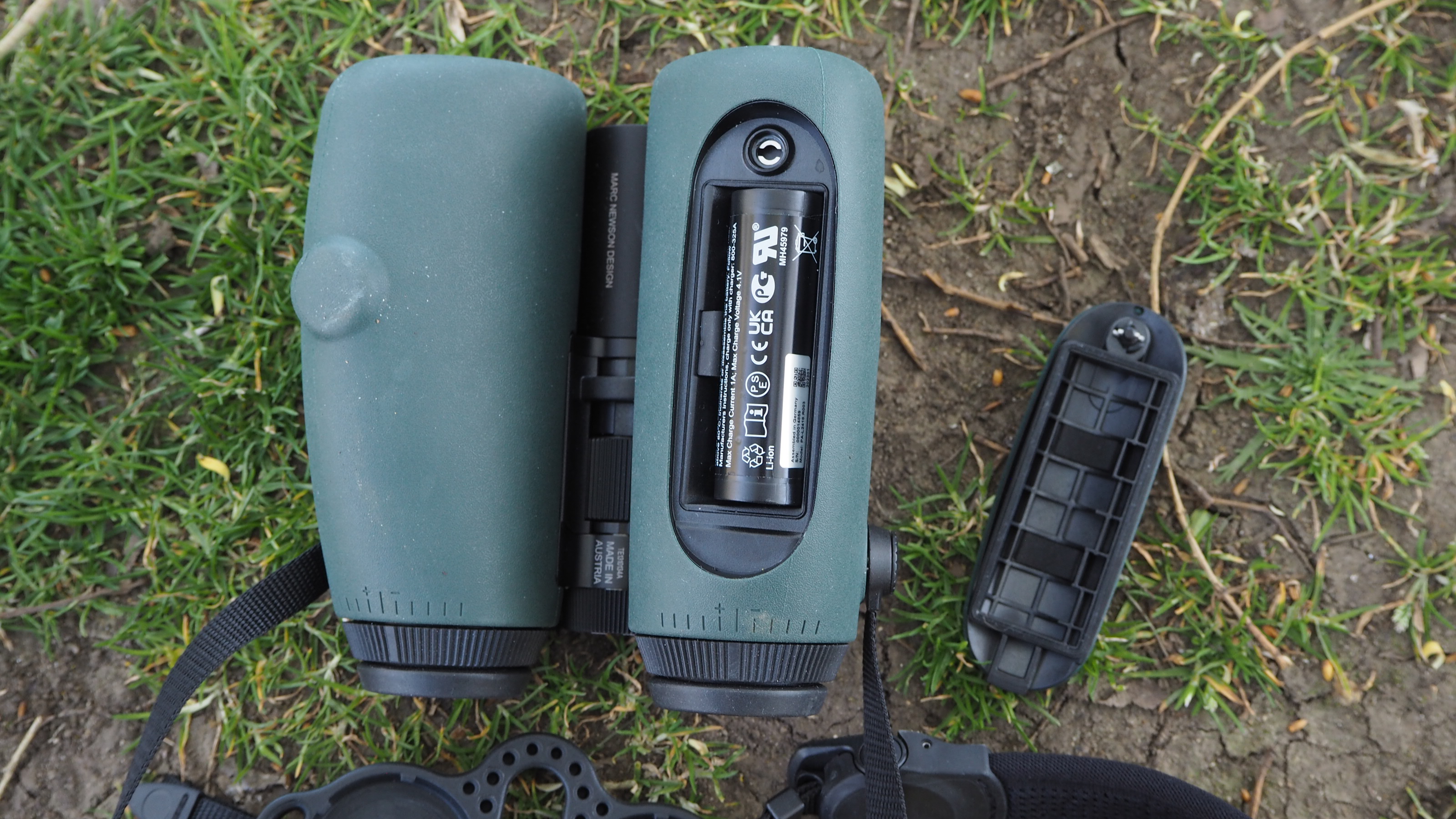
If we wanted to go fully analog, we could leave the battery out and use the Swarovski like any standard binocular, but even without this cell, it’s already just over 1 kg. This proves a blessing as well as a curse. The weight of it in the hand, as well as the rubber surface, enables a firm, steady hold, providing a view largely free from image judder. That’s not always the case when using binoculars with a similar core specification, especially when they don’t have an image stabilizer. Interestingly, the designer hasn’t found room for a screw thread for direct tripod mounting, either.
Get the world’s most fascinating discoveries delivered straight to your inbox.
In terms of handling, the fully analog optical expertise has been matched with digital know-how. The inclusion of the latter means that we get a mode select dial between the eyepieces, a feature we’d normally expect on a digital camera but not a binocular. Large and obvious, the settings ranged around it include dedicated modes for identifying birds and animals as well as, more conventionally, an image-capture setting and an onboard compass, as well as potential custom settings. Dial aside, there are just three further operational buttons on the top plate of the device: the power button, an arrow button for switching between settings and a third button to press when you want to identify an animal or bird. In camera mode, this doubles as the shutter release button.
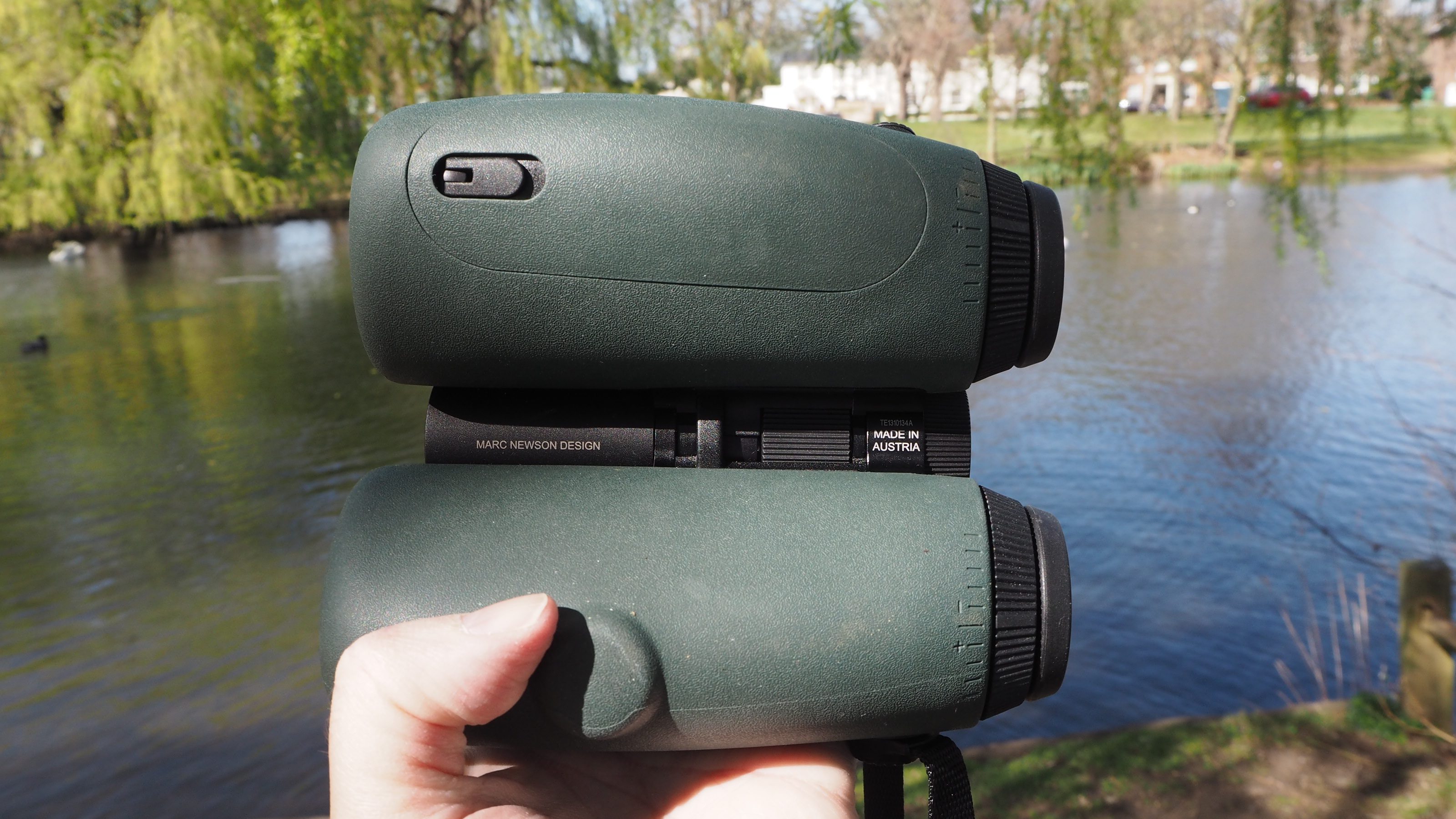
One minor complaint is that because these buttons are grouped closely together and of the same size and shape, it’s too easy to press the wrong one while our attention is otherwise on our subject.
Operation is, however, comfortable. You get twist-up eyecups with incrementally identifiable levels of adjustment, to enable seamless use and avoid light bleed whether you’re wearing spectacles or not.
Although it is quite stiff to adjust, also useful to have a central folding mechanism so you can alter the distance between the eyepieces to better match your own eyes. On top of this, a high-quality quality thick, padded shoulder/neck strap is provided to make transporting a device that weighs as much as a bag of sugar a little less of a strain.
The overall impression is that Swarovski wants the user’s experience of its AX Visio 10x32 to feel luxurious, and by and large, it does.
Optics
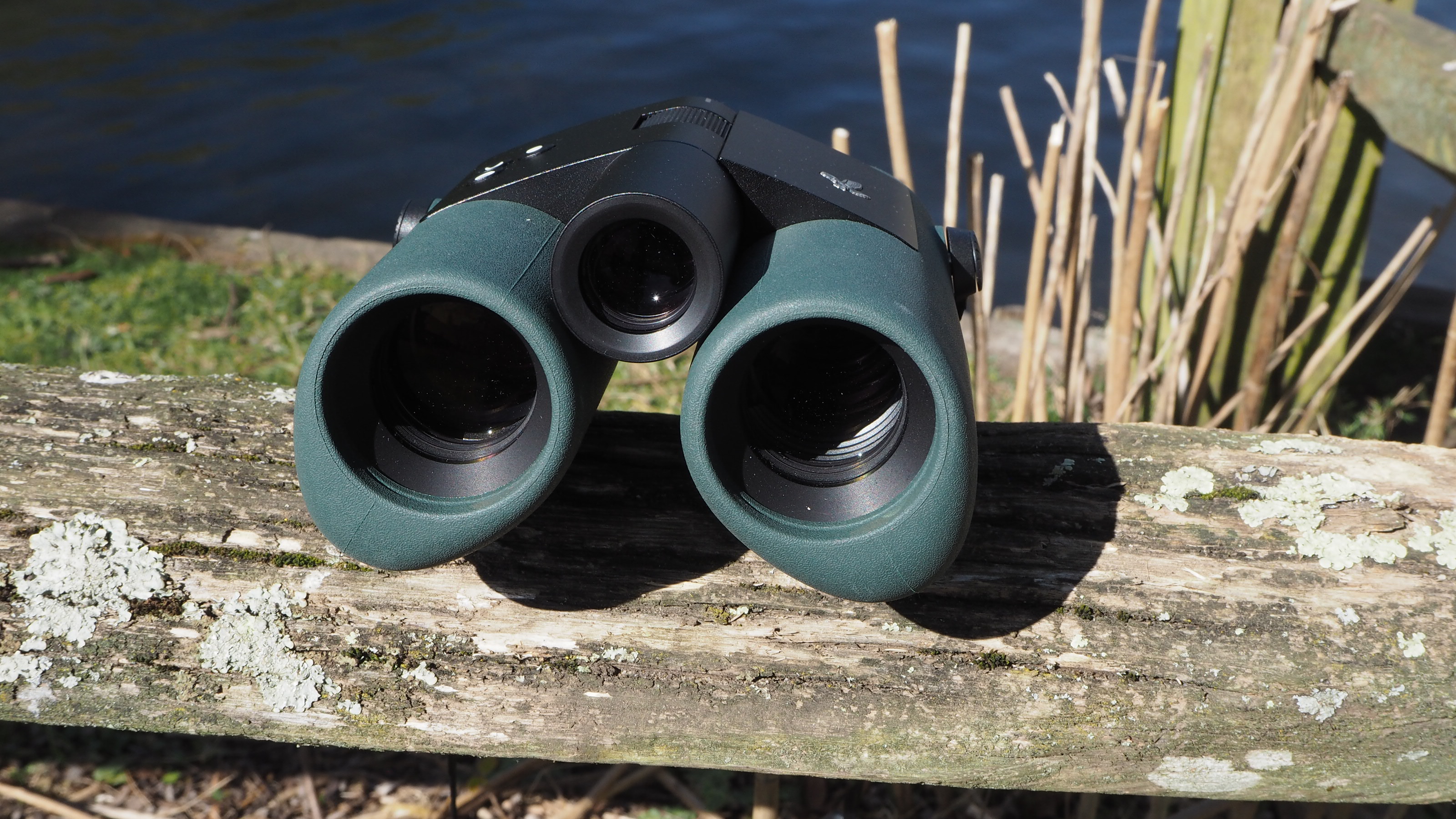
- 32mm objective lens is noticeably bright and clear
- 10x magnification allows scrutiny of fine detail
- Weight and rubberized surface promote a firm grip
With any binocular other than the Swarovski Optik AX Visio 10x32, the discussion would be all about its marriage of a useful, if standard, 10x magnification and large, bright 32mm objective lens. We’d also be talking about its fully multi-coated optics to minimize lens flare and other aberrations, combined with the inclusion of BaK-4 prisms to maximize light transmission and boost output clarity.
The good news is that, optically speaking, we found the performance of this binocular to be very impressive indeed, not unexpectedly, given Swarovski’s reputation in this field and the high price tag attached. Nevertheless, we found raising these binoculars to our eyes was like a visit to the optician — by which we mean that details which were indistinct when viewed with our own eyes suddenly snapped sharply into focus when we pressed our eyes against the eyepieces.
Unusually, both eyepieces feature individual dioptric adjustment, so you can more specifically tailor your view for any slight strength or weakness in your left or right eye. Ultimately, what you want to see through these binoculars is a single, large, bright circle, with sharpness maintained right across the field of view and into the corners of the frame.
Focusing is via a ridged, rubberized ring located between the lens barrels. Here it falls within reach of your forefinger when gripping the device. This means you don’t need to take your eyes off whatever you’re observing to make fine adjustments to the image on the fly.
What we saw
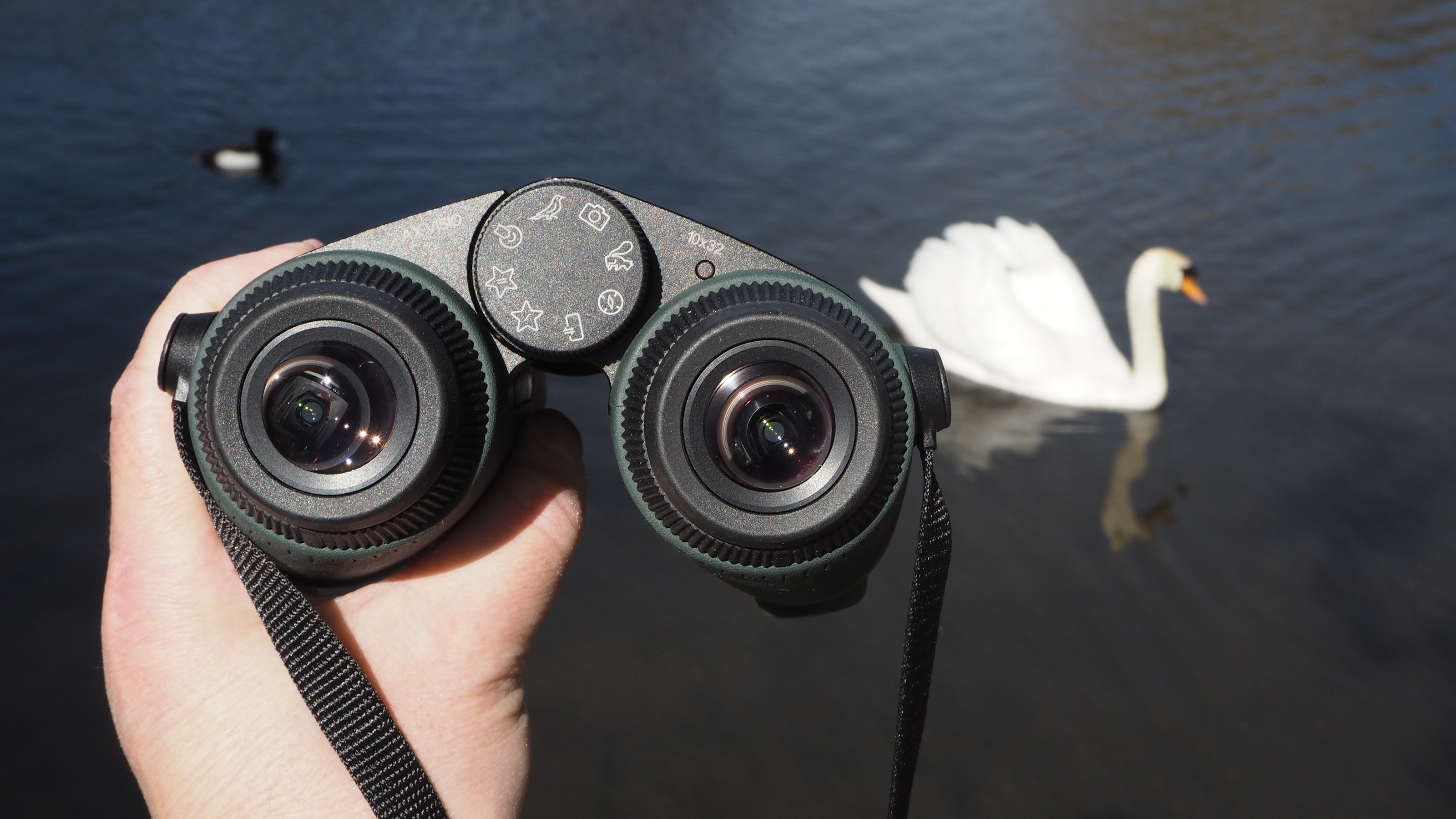
The boast here is that if the digital aspect of this device is activated, the Swarovski Optik AX Visio 10x32 can identify up to 9,000 birds, mammals, dragonflies and butterflies from around the world.
It is, by and large, successful at doing so. We found that even when we had the tail of the bird rather than the head in view, it could still make a correct identification. However, if we got too close, even if the head or plumage (which one would assume to be a key identifying feature) was in full view, we’d get an error message. Unsurprisingly, the most accurate results occurred when we had the whole body in frame.
While the binocular’s AI-enabled identification worked consistently well for us when the device was aimed at wild deer and waterfowl, it coped less well when we strayed beyond this remit. For example, a freshwater turtle was at first identified as a fallow deer and then, in a second attempt with some reframing, a beaver. Still, it proved not just a potential source of education, but also a lot of fun once we’d got to grips with it.
As previously noted, this binocular still functions extremely well as a fully analog device. So, you don’t need to have its digital features active, with identification of creatures presented as a digital overlay within the eyepieces, to use it like a very high-quality standard binocular.
Yes, it would feel like a waste to pay extra for the tech that these binos have onboard and not use it. But in some respects, it feels like an extra layer on top of what is already a very capable and optically excellent binocular.
Verdict
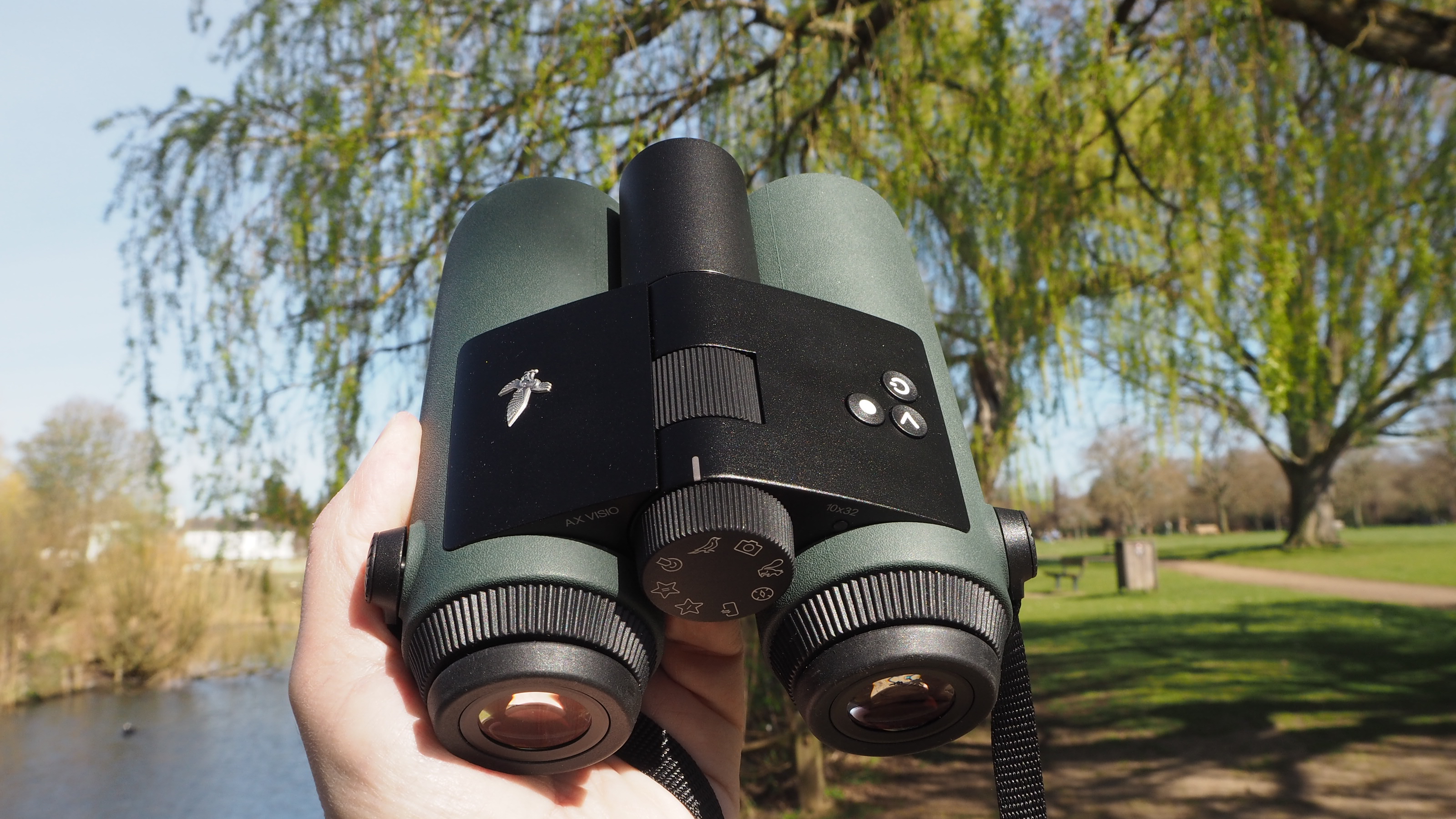
✅ You aim for the near ultimate in optical excellence and viewing clarity.
✅ You want to identify unfamiliar wildlife and share photos with fellow enthusiasts.
❌ You’re not specifically interested in birds or animals.
❌ You’ve already got a bad back or an aching shoulder.
If we’re spending the price of a secondhand vehicle, or a flagship mirrorless camera and very high-quality lens, on a binocular alone, we want it to both impress and feel like it’s repaying our investment from the get-go. In both respects, the Swarovski Optik AX Visio 10x32 largely succeeds.
Its 10x magnification may be standard and nothing to write home about on its own, but because its maker hasn’t gone crazy with this aspect, it’s possible to handhold the device and get crystal clear, judder-free results. In fact, having handled a whole slew of similarly specified devices, we feel this one goes “one louder” when it comes to viewing quality. It has an almost eyeball-searing sharpness, especially in full daylight ‚— results indicative of its premium build and its maker’s long-held expertise in optics.
If the Swarovski Optik AX Visio 10x32 isn't for you
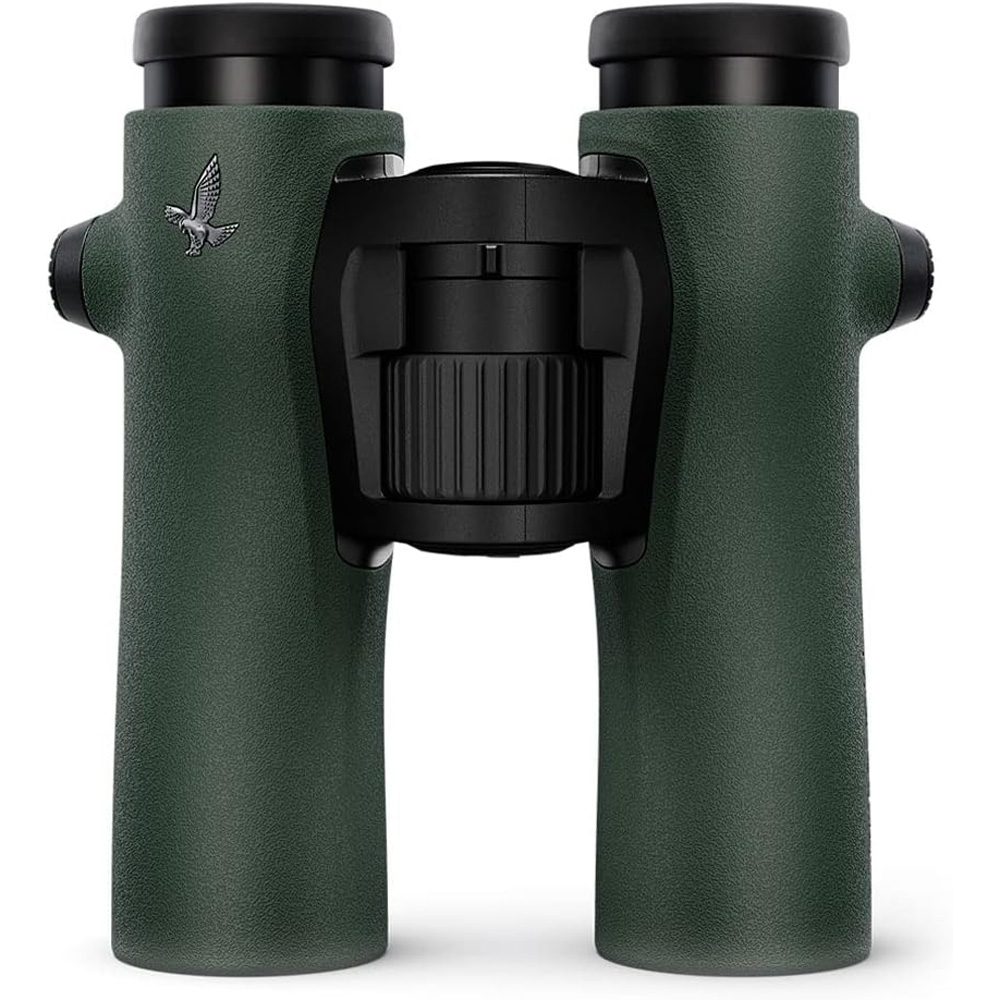
An all-analog alternative from the same manufacturer, with the same core 10x32 specification and optical excellence but none of the digital extras.
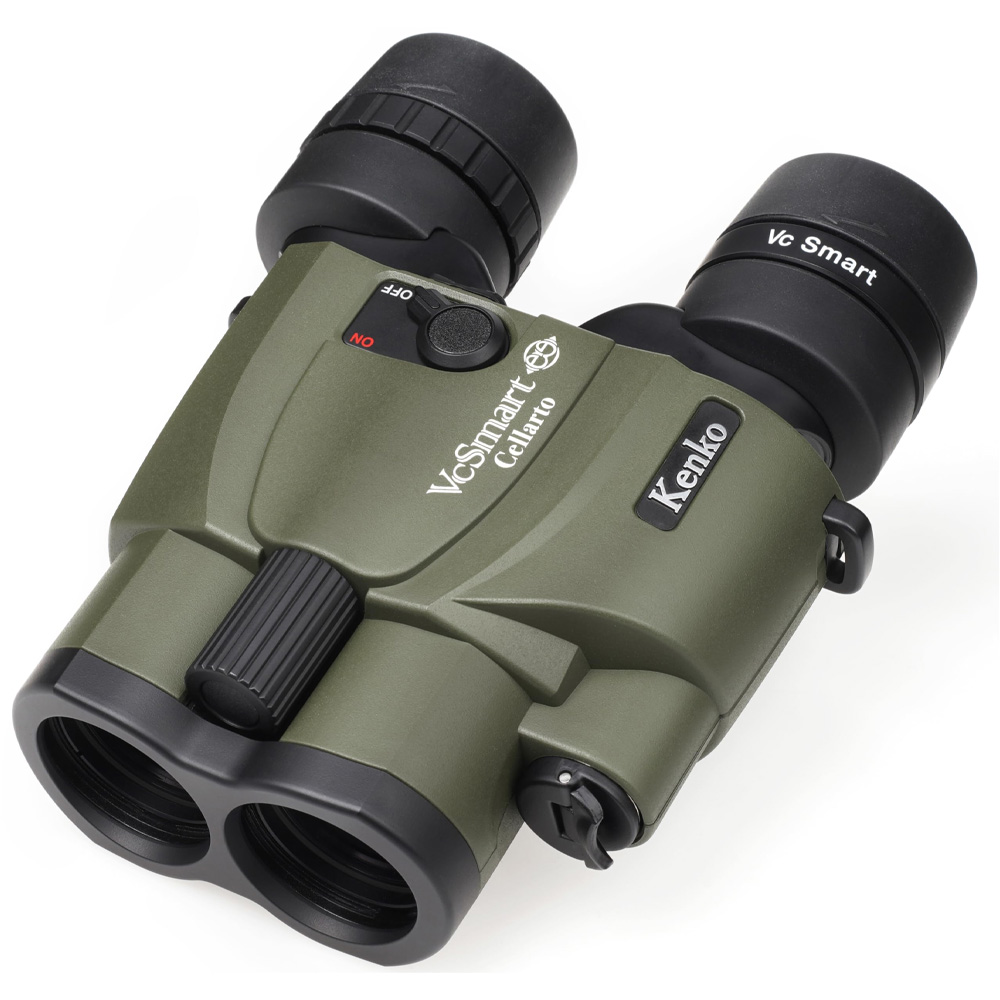
With almost the same core magnification and objective lens size, this Japanese-made model is waterproof and offers built-in image stabilization, here referred to as ‘Vibration Correction’.
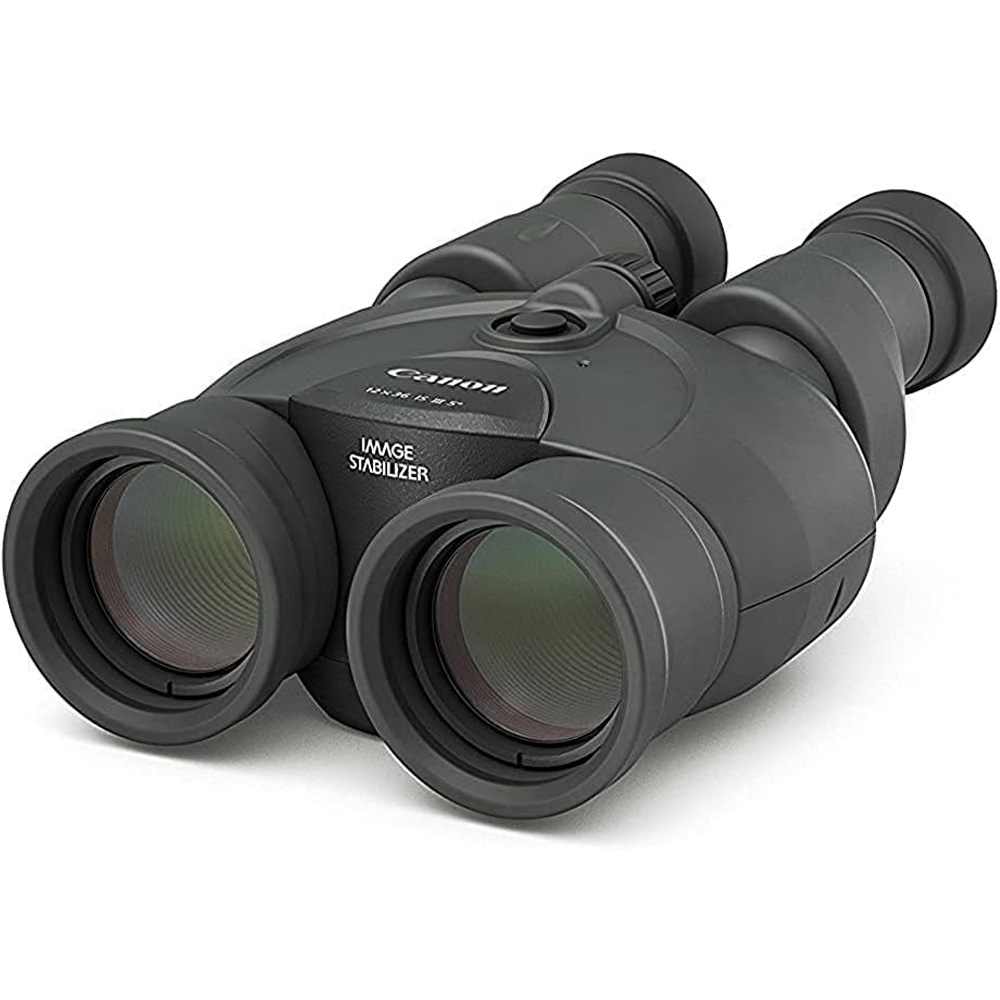
This image-stabilized binocular comes into its own because of the higher 12x magnification factor. But it’s slightly bulky due to the larger objective lens, and the design is a little “bare bones”.
How we tested the Swarovski AX Visio 10x32
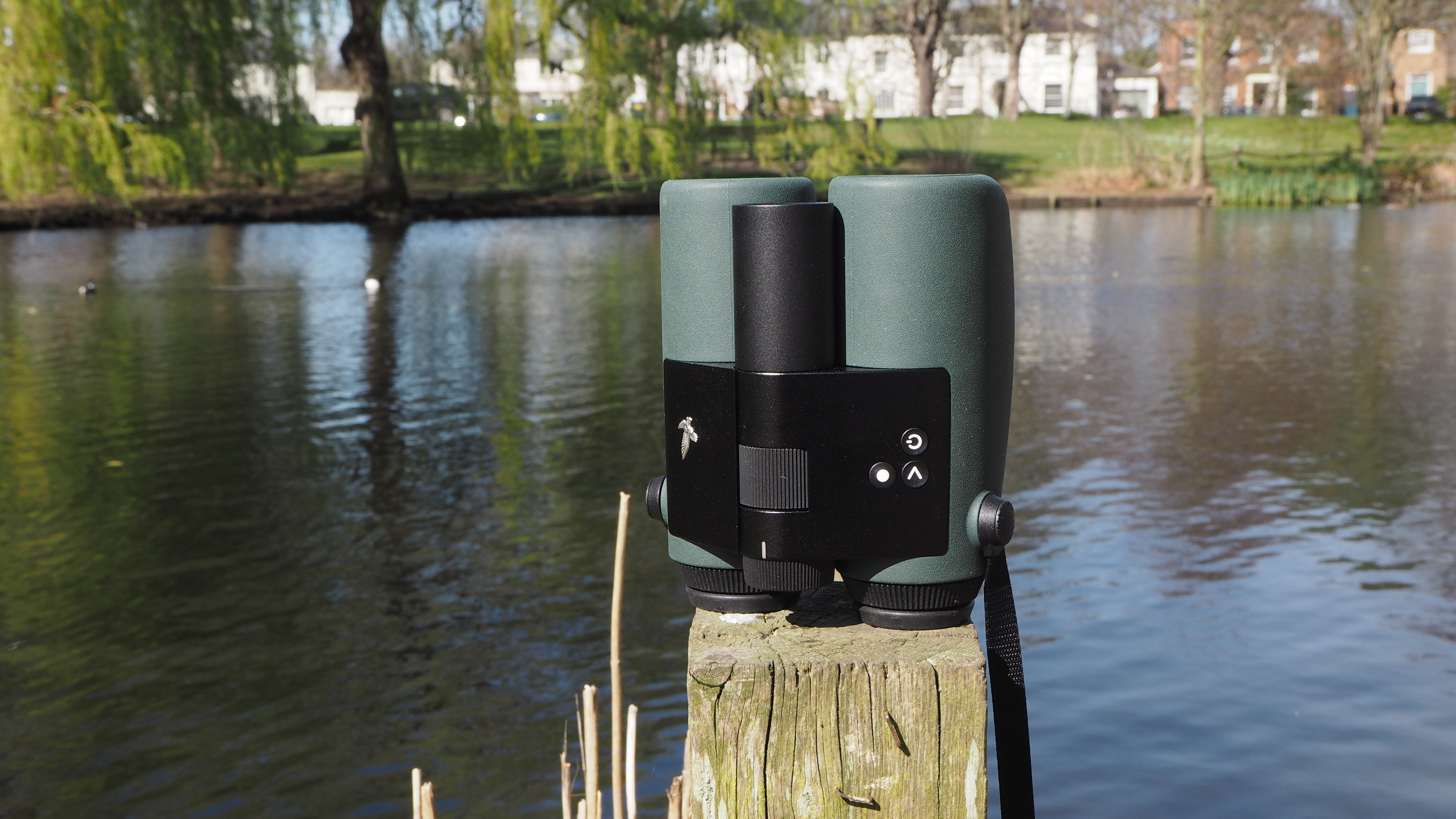
We tested the Swarovski AX Visio 10x32 under a variety of different lighting conditions, and during the night for stargazing as well as during the day for wildlife-watching. We also paired it with our smartphone and used its onboard capabilities to test whether it correctly identified wildlife, which it did around 88% of the time.
Gavin has over 30 year experience of writing about photography and television. He is currently the editor of British Photographic Industry News, and previously served as editor of Which Digital Camera and deputy editor of Total Digital Photography.
He has also written for a wide range of publications including T3, BBC Focus, Empire, NME, Radio Times, MacWorld, Computer Active, What Digital Camera and Rough Guide books.
He also writes on a number of specialist subjects including binoculars and monoculars, spotting scopes, microscopes, trail cameras, action cameras, body cameras, filters, cameras straps and more.
You must confirm your public display name before commenting
Please logout and then login again, you will then be prompted to enter your display name.
